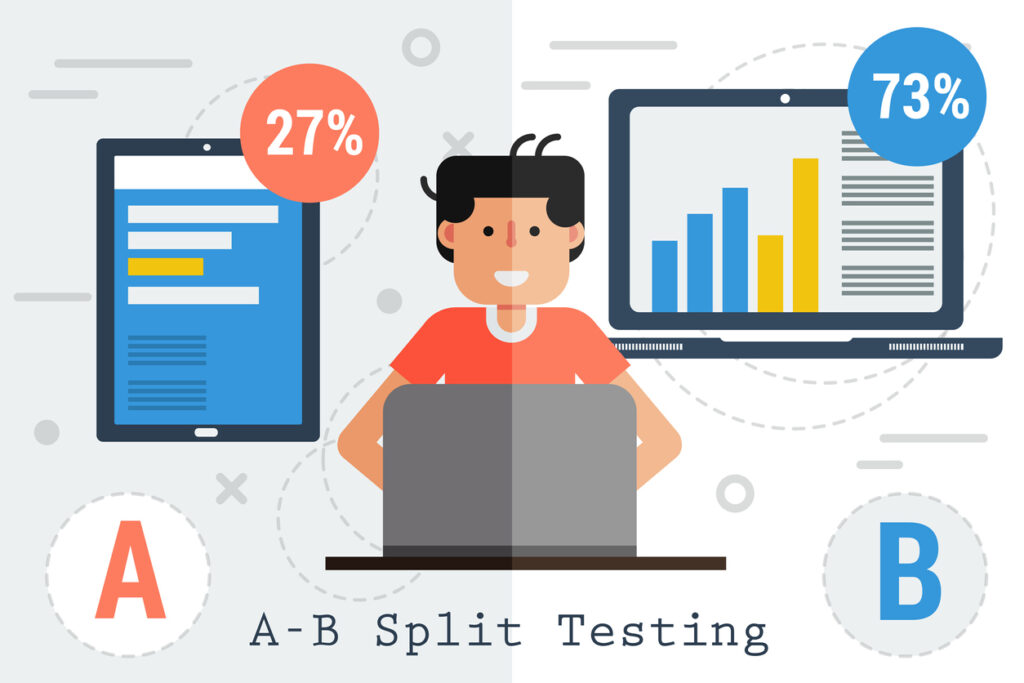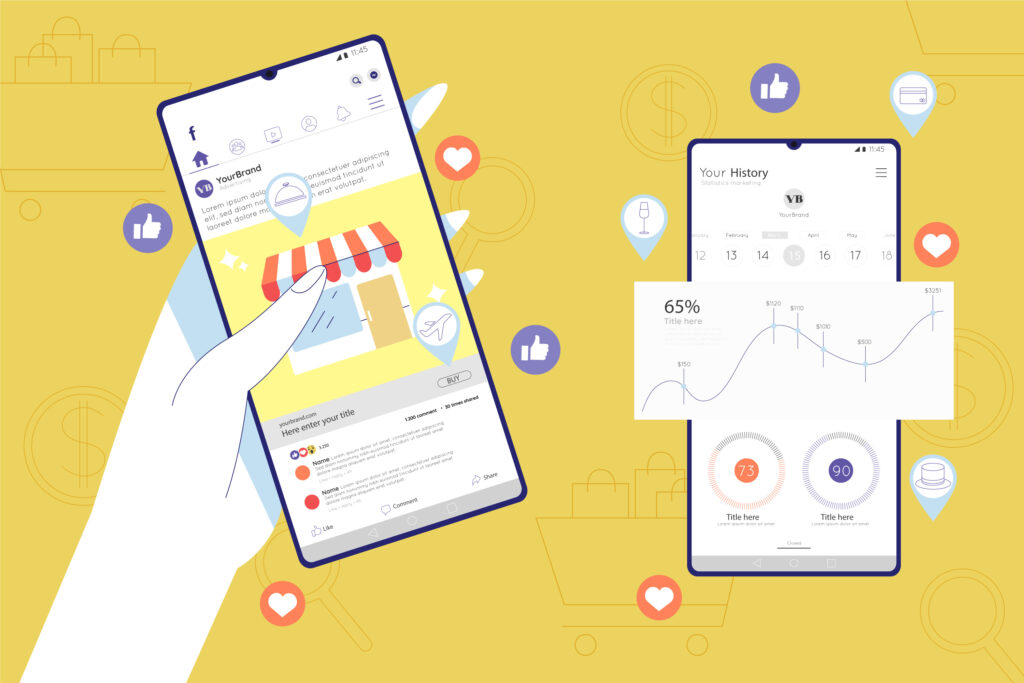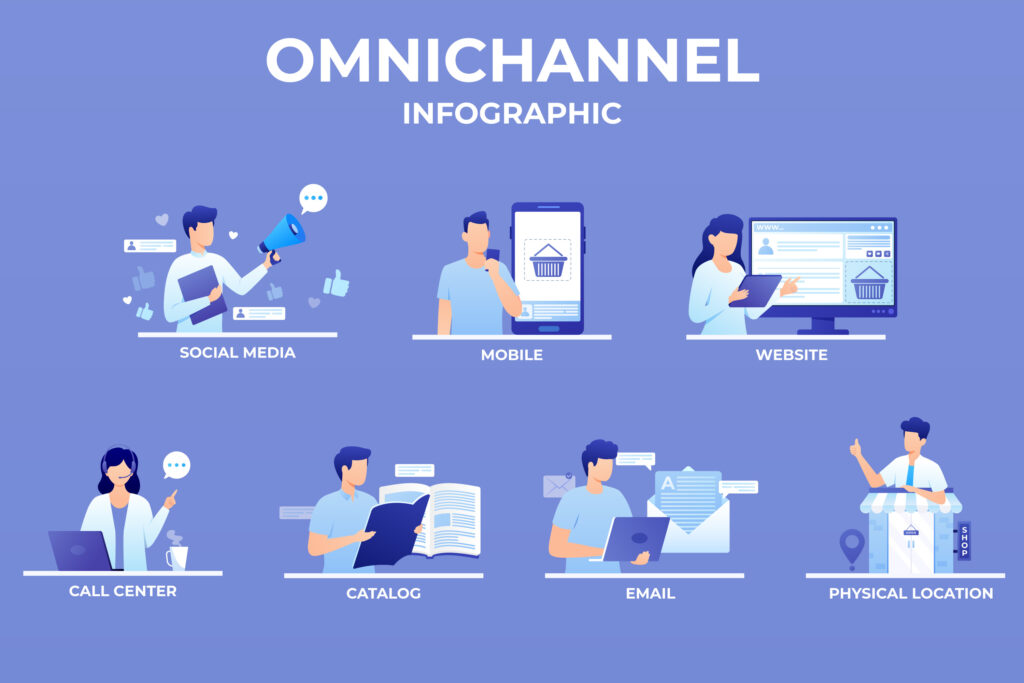
For years, marketers treated brand building and performance marketing as separate goals. Brand building nurtured emotions and loyalty, while performance marketing chased immediate sales.
But today’s consumers are bombarded with messages. Just pushing sales isn’t enough. The good news? These approaches can be powerful allies. A strong brand gets higher ad clicks, while targeted ads spread your brand message further. This synergy fuels sustainable growth.
So why now? Data privacy changes make relying solely on performance marketing tracking difficult. Brands need trust and organic connections.
This guide explores how to integrate brand building and performance marketing for a winning modern marketing strategy.
Table of Contents
Understanding the Core Concepts
Building a successful brand and driving measurable results are not mutually exclusive goals. In fact, a deep understanding of both brand building and performance marketing is essential for crafting a truly effective marketing strategy. Here, we’ll delve into the core concepts of each approach and explore the powerful synergy they create.

Brand Building Defined: Cultivating the Soul of Your Brand
A strong brand identity goes beyond just a logo and a catchy slogan. It’s the essence of your company, encompassing your core values, mission, and the unique story you want to tell. It’s about creating an emotional connection with your target audience, establishing trust, and fostering loyalty.
One of the key elements that define a strong brand is brand identity. This is the outward expression of your brand, including your visual elements (logo, color palette, typography), brand voice (tone and personality used in communication), and brand messaging (key messages communicated to your audience). Consistency across these elements creates a recognizable and memorable brand experience.
Moreover, the extent to which your audience recognizes your brand name and what it stands for defines brand awareness. Building this awareness is paramount; it’s the engine that drives traffic, generates leads, and ultimately converts them into loyal customers.
At the heart of any successful brand lies a cadre of loyal customers. Loyal customers are those who have a positive emotional connection with your brand and consistently choose your products or services over competitors. Fostering brand loyalty encourages repeat business, positive word-of-mouth marketing, and increased customer lifetime value.
Lastly, we have brand equity. This represents the overall value associated with your brand. It’s a combination of tangible (brand assets like trademarks) and intangible (customer perception, brand loyalty) factors. A strong brand equity allows you to command premium pricing and enjoy a competitive advantage.
Now, let’s check out a few strategies for building a strong brand.
Strategies for Building a Strong Brand

Storytelling is a potent tool in branding. Humans are hardwired to connect with stories. By crafting compelling brand stories that embody your values, mission, and solutions to customer problems, you establish an emotional connection and make your brand more relatable.
Emotional connection is paramount. Through your brand messaging and visuals, strive to evoke positive emotions. Whether through humor, inspiration, or a sense of community, tapping into these emotions can deeply resonate with your target audience, nurturing brand loyalty.
Your brand voice and messaging play a crucial role in shaping perceptions. Developing a consistent brand voice that reflects your personality and resonates with your audience is key. Ensure your messaging is clear, concise, and aligned with your values and mission.
Customer experience is pivotal. Every touchpoint a customer has with your brand shapes their perception. Focus on creating positive customer experiences at every stage of the buyer’s journey, from initial awareness to post-purchase interactions.
Building a community around your brand fosters loyalty and engagement. Encourage customer interactions on social media, organize events, or establish loyalty programs to reward repeat customers.
Understanding these key elements and implementing effective brand-building strategies allows you to create a strong foundation for your marketing efforts.

Performance Marketing Defined: Driving Measurable Results
Performance marketing focuses on generating measurable results and maximizing return on investment (ROI) for marketing campaigns. Unlike traditional marketing that emphasizes brand awareness, performance marketing is all about driving specific actions, such as website visits, leads generated, or sales conversions.
One common performance marketing tactic is Pay-Per-Click (PPC) Advertising. This involves running targeted ads on search engines (like Google Ads) or social media platforms. Advertisers only pay when users click on their ad, making it a cost-effective way to drive qualified traffic to your website.
Furthermore, Search Engine Optimization (SEO) plays a crucial role in performance marketing. SEO involves optimizing your website and content to rank higher in organic search results. Effective SEO drives targeted traffic to your website without the need for paid advertising.
Social Media Marketing is another integral aspect of performance marketing. It entails utilizing social media platforms to connect with your target audience, build brand awareness, and drive website traffic through both organic and paid strategies.
Affiliate Marketing is a key tactic in performance marketing as well. It involves partnering with other websites or influencers to promote your products or services in exchange for a commission on sales generated through their referrals.
Finally, Email Marketing remains a staple in performance marketing strategies. Building an email list enables you to nurture leads, promote products, and drive sales through targeted email campaigns.
Performance Marketing Metrics
To measure the effectiveness of your performance marketing campaigns, you need to track relevant metrics. These can include:
- Return on Investment (ROI): This metric measures the net profit generated from a marketing campaign compared to the cost of investment.
- Conversion Rate: This measures the percentage of website visitors who take a desired action, such as making a purchase or subscribing to a newsletter.
- Cost-per-Acquisition (CPA): This metric measures the cost of acquiring a new customer through a specific marketing channel.
- Click-through Rate (CTR): This measures the percentage of people who click on your ad after seeing it.
- Customer Lifetime Value (CLV): This metric estimates the total revenue a customer is expected to generate for your business over their lifetime relationship
By understanding these core concepts and employing effective strategies, you can build a strong brand that resonates with your target audience while driving measurable results through performance marketing initiatives. The next section will delve into the powerful synergy created when these two approaches are integrated.
The Power of Integration
Performance Marketing Informs Brand Building
Performance marketing is more than just driving immediate sales; it’s a powerful tool for informing brand building strategies. The data gathered from performance marketing campaigns serves as a goldmine of insights, offering valuable opportunities to refine brand messaging and target audiences.
One key method is through A/B testing ad copy and creatives. By experimenting with different versions of content, visuals, and landing pages, marketers can pinpoint what resonates most with their target audience. Analyzing which elements lead to higher click-through rates and conversions enables refinement of overall brand messaging to ensure it’s clear, compelling, and directly addresses audience needs and desires.

Moreover, performance marketing allows for precise audience segmentation. Tactics such as social media advertising and PPC campaigns enable marketers to dissect demographics, interests, and online behavior, facilitating tailored messaging for specific audience groups. Understanding which segments respond best to campaigns provides valuable insights into the ideal customer profile, enabling brands to adapt their messaging accordingly.
Additionally, performance marketing aids in customer journey mapping. By analyzing customer behavior data across various touchpoints such as website visits, social media interactions, and email engagement, marketers can map out the customer journey. This comprehensive view helps identify potential pain points and areas for improvement throughout the customer experience, thereby enhancing the overall brand image. In essence, performance marketing serves as a dynamic tool not only for driving immediate results but also for informing and strengthening long-term brand strategies.
Brand Building Boosts Performance Marketing Efforts
A strong brand acts as a powerful force multiplier for your performance marketing initiatives, and here’s how.
Firstly, a strong brand elevates ad click-through rates (CTRs). Consumers are more likely to click on ads from brands they recognize and trust. By establishing brand awareness through cohesive storytelling and messaging, brands can enhance recognition, thereby driving up CTRs for their paid advertising efforts.
Furthermore, a compelling brand identity aids in brand recall. When consumers encounter your brand in performance marketing campaigns, such as ads or sponsored content, a strong brand presence helps them retain memory of your brand over time. This can result in heightened organic website traffic and conversions in the future, even if they don’t immediately engage with your ad.

Additionally, a robust brand contributes to enhanced customer lifetime value (CLTV). By fostering loyalty and building emotional connections, brands can encourage repeat purchases and advocacy from customers. When individuals feel a positive affinity towards a brand, they are more inclined to spend more and promote the brand to others, thereby augmenting the overall CLTV.
In essence, the synergy between a strong brand and performance marketing is undeniable, fueling each other’s success and fostering long-term growth and loyalty within the customer base.
Alignment of Goals: Short-Term Wins and Long-Term Vision
Integrating brand building and performance marketing helps you achieve both short-term sales objectives and long-term brand growth. Performance marketing tactics like targeted advertising and email campaigns can drive immediate sales and lead generation, fulfilling your short-term needs.
At the same time, brand building activities like content marketing and social media engagement lay the groundwork for long-term success. These activities nurture customer relationships, build brand loyalty, and establish a strong brand reputation, ensuring sustainable growth for your business.
By integrating these approaches, you create a balanced marketing strategy that addresses both the immediate need for sales and the long-term vision for brand development.
Metrics and Measurement: A Unified Approach
Developing a comprehensive measurement framework is crucial for understanding the impact of both brand building and performance marketing activities. Here are some key considerations:
While brand building focuses on long-term brand perception, there are ways to measure its effectiveness. Track brand awareness through surveys, social media engagement metrics, website traffic growth, and brand sentiment analysis tools. Brand sentiment analysis helps you understand how consumers perceive your brand online, allowing you to refine your messaging and brand image accordingly.
On the other hand, performance marketing metrics provide immediate feedback on marketing efforts. Key indicators like return on investment (ROI), conversion rates, cost-per-acquisition (CPA), and click-through rates (CTR) offer tangible insights into campaign effectiveness.
Therefore, integrating brand building and performance marketing isn’t just about combining tactics – it’s about fostering a unified approach that leverages data, storytelling, and audience insights to achieve sustainable brand growth. The next section will delve into specific strategies to put this integrated approach into action.
Strategies for Successful Integration
Now that we’ve explored the power of integrating brand building and performance marketing, let’s delve into specific strategies to put this approach into action. These strategies are most effective when they work together seamlessly, leveraging each other’s strengths to achieve your marketing goals.

Content Marketing
Content marketing is a cornerstone of brand building. By creating high-quality, informative, and engaging content (blog posts, infographics, videos) that resonates with your target audience, you establish yourself as a thought leader and build brand awareness. This content can then be strategically leveraged in performance marketing campaigns, driving traffic to your website and capturing leads.
Press releases, for example, bridge the gap between brand building and performance marketing by combining storytelling with immediate traffic generation. They help establish brand credibility and trust while also providing SEO benefits and driving website visits.
If you wonder how to craft effective press releases, here is a useful guide that includes examples for various occasions.
Let’s explore another example. Imagine you’re a company in the fitness industry. You could create informative blog posts on “Top 5 Exercises for Beginners” or “Building a Sustainable Fitness Routine.” This content not only builds brand awareness by showcasing your expertise but can also be promoted through targeted social media ads (performance marketing) to reach a relevant audience interested in fitness. By clicking on the ad, they’ll be directed to your website where they can learn more about your brand and potentially convert into paying customers.
Social Media Engagement
Social media platforms offer a powerful avenue for brand storytelling and fostering audience engagement. By creating engaging content (social media posts, stories, live videos) that aligns with your brand messaging, you can build a community of loyal brand advocates. This community becomes a platform to showcase your brand personality, values, and customer success stories.
Performance marketing tactics can be seamlessly integrated into this strategy. Targeted social media ads can be used to promote specific content pieces or special offers, reaching a highly relevant audience based on demographics and interests. Social media analytics can provide valuable insights into audience engagement, allowing you to refine your brand messaging and tailor future content for maximum impact.

Influencer Marketing
Partnering with relevant influencers in your industry can be a game-changer for brand building. Influencers have established credibility and trust with their audience, making their endorsements highly valuable. Collaborating with influencers who align with your brand values allows you to reach a wider audience and leverage their existing trust to promote your brand message.
This integration can be highly effective when combined with performance marketing strategies. Influencer marketing campaigns can be structured with trackable links and discount codes, allowing you to measure the direct impact on brand awareness, website traffic, and conversions.
Data-Driven Decision Making
The key to a successful integrated marketing strategy lies in data-driven decision making. Tracking both brand building and performance marketing metrics is crucial for understanding what’s working and what needs optimization. Brand building efforts can be measured through brand awareness surveys, social media engagement metrics, and website traffic growth.
Performance marketing data provides insights into conversions, click-through rates, and return on ad spend (ROAS). By analyzing both sets of data together, you can identify areas for improvement and optimize your overall marketing strategy for maximum impact. This data-driven approach allows you to refine your brand messaging, tailor content, and target the right audience for both brand building and performance marketing initiatives.
Omnichannel Marketing
In today’s digital landscape, consumers interact with brands across various channels (website, social media, email). Creating a seamless omnichannel marketing experience is crucial. Ensure your brand messaging is consistent across all touchpoints, and consider how each channel can reinforce your overall marketing goals.
For example, a blog post on your website promoting your eco-friendly cleaning products could be shared on social media platforms, accompanied by captivating visuals. Additionally, you might consider email marketing campaigns offering discounts or exclusive content related to the blog post.

These are just a few key strategies for integrating brand building and performance marketing. By combining these approaches, you can create a holistic marketing strategy that fosters brand loyalty, drives conversions, and fuels sustainable growth for your business.
Overcoming Challenges
Budget Allocation
One of the most pressing concerns is resource allocation. Deciding how to split the marketing budget between brand building initiatives (which often have a longer-term focus) and performance marketing campaigns (focused on immediate results) can be a delicate balancing act.
An effective strategy involves understanding the customer journey and strategically allocating resources at each stage. For example, during the brand awareness stage, a larger portion of the budget might be allocated towards content creation and social media engagement (brand building). As potential customers move down the funnel and show interest, budget allocation might shift towards targeted ads and conversion optimization tactics (performance marketing).
It’s important to avoid neglecting either aspect. Underfunding brand building can lead to a weak foundation, hindering the effectiveness of even the most well-targeted performance marketing campaigns. Conversely, neglecting performance marketing might result in a strong brand with low conversion rates, failing to capitalize on the brand awareness generated.
The key lies in developing a data-driven approach that allocates budget based on historical performance, industry benchmarks, and the specific goals of each campaign.
Data Integration
Measuring the combined impact of brand building and performance marketing activities requires a unified approach to data collection and analysis. However, integrating data from diverse sources like website analytics, social media platforms, and content management systems can be a significant challenge.
Standardizing data formats and establishing clear data collection processes across all marketing channels is crucial. Investing in marketing automation tools that streamline data aggregation and reporting can significantly improve efficiency.
The real challenge lies in interpreting the data holistically. Marketers need to move beyond siloed analysis and understand how brand building metrics like brand sentiment and social media engagement influence performance marketing outcomes like conversion rates and customer lifetime value.
Organizational Alignment
A critical factor for successful integration is breaking down the traditional silos between brand and performance marketing teams. Historically, these teams have often operated with distinct goals and priorities. Fostering collaboration and a shared understanding of the bigger picture is essential.
Regular communication, joint planning sessions, and establishing clear performance objectives that encompass both brand building and performance marketing goals are crucial steps. Encouraging a culture of data-driven decision making where both teams have a stake in the overall marketing success can further bridge the gap.
By acknowledging these challenges and implementing strategies to overcome them, companies can pave the way for a truly integrated marketing approach that fuels sustainable brand growth and maximizes marketing ROI.

Final Remarks
The traditional divide between brand building and performance marketing is a thing of the past. By integrating these strategies, you unlock a powerful synergy that elevates your brand and drives measurable results.
Remember, a strong brand is the fertile ground where high-performing marketing campaigns flourish. Invest in building brand awareness and fostering brand loyalty while leveraging data and audience insights to optimize your performance marketing efforts.
The path to sustainable brand growth lies in a unified marketing approach that tells a compelling brand story, resonates with your audience, and delivers a seamless customer experience across all touchpoints.
Related Article:
The following article may contain the author’s opinions and interpretations of the subject matter. Any of the products, services, or platforms mentioned is not sponsored or affiliated.
Featured Image courtesy of tirachardz on Freepik
